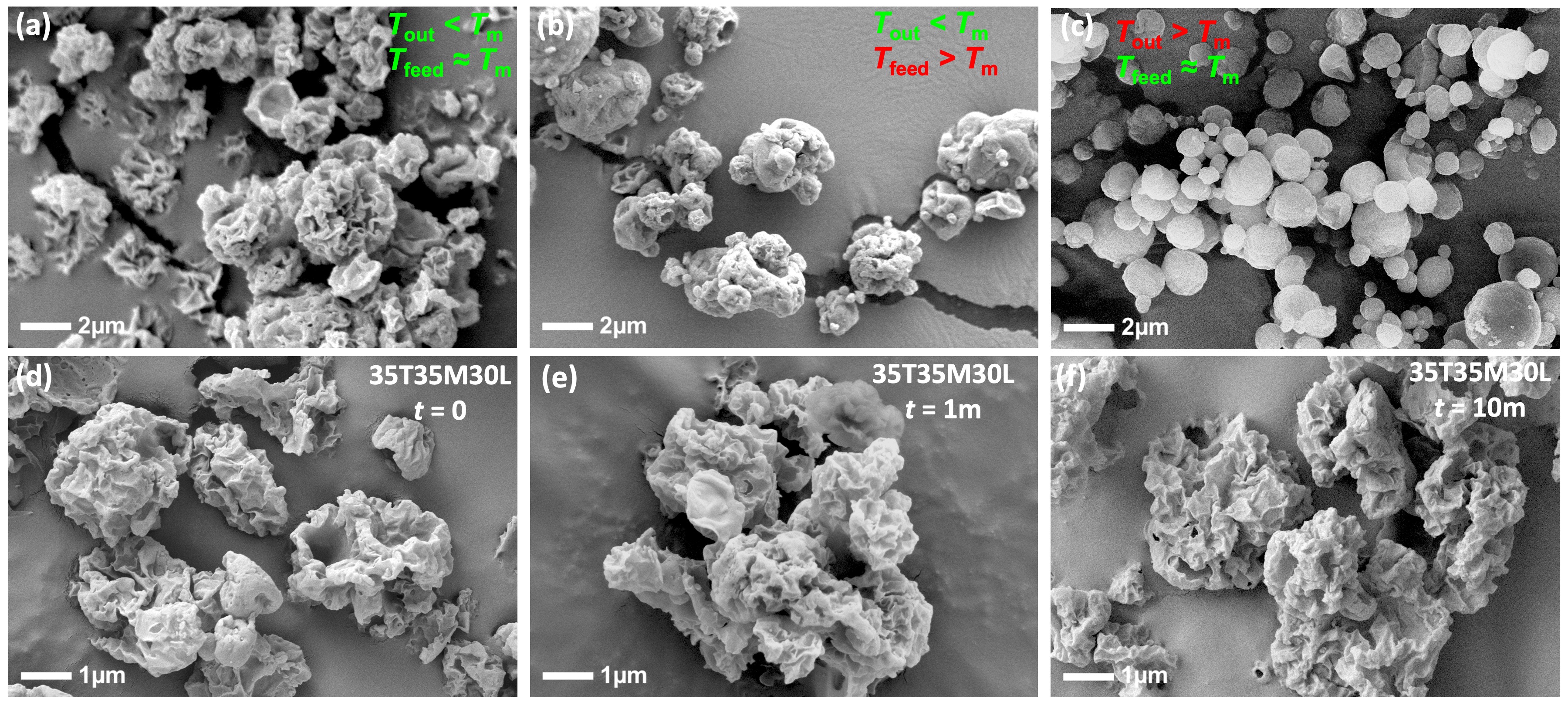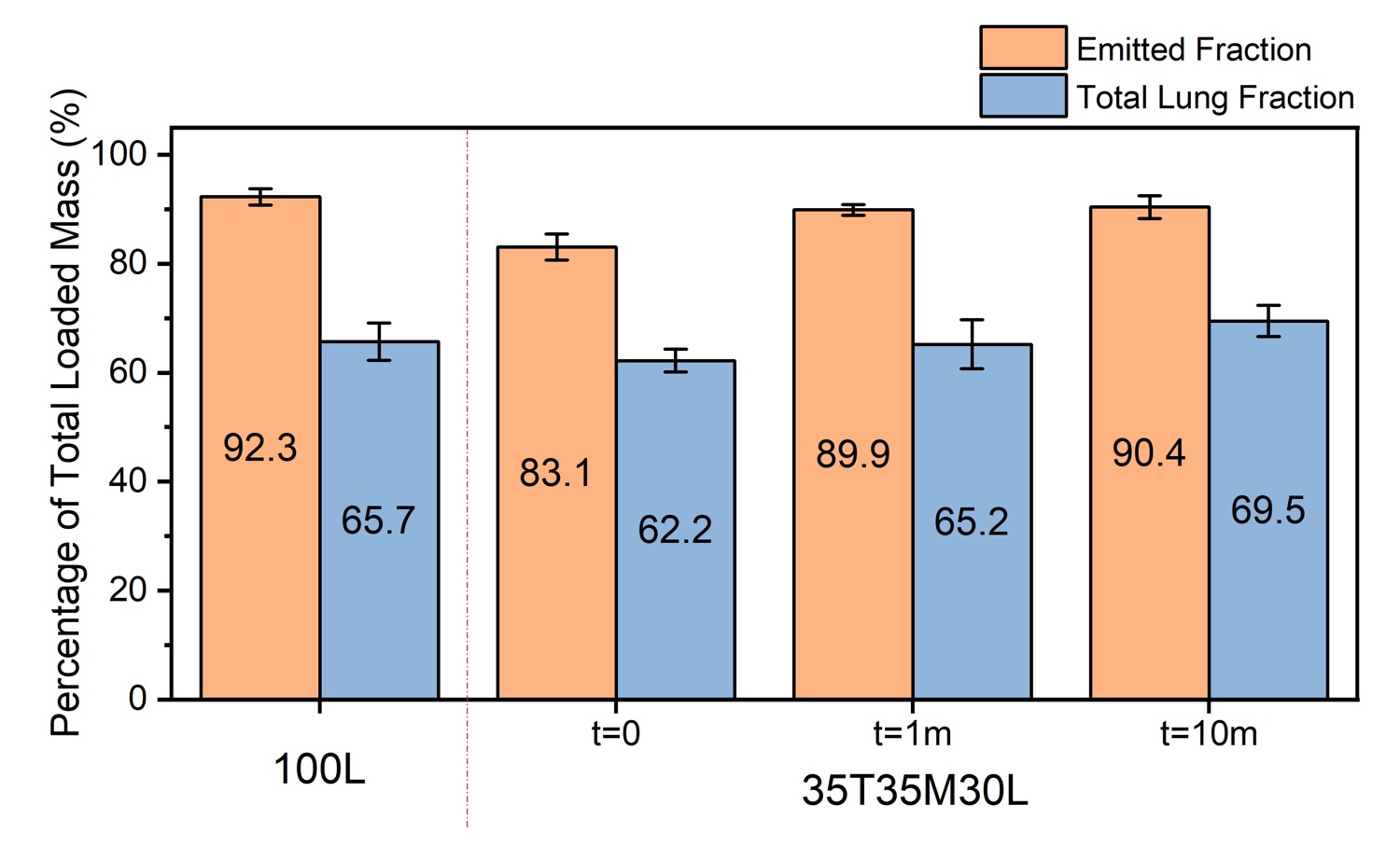Formulation and Delivery - Biomolecular
Category: Late Breaking Poster Abstract
(M1530-03-16) Robust Rugose Lipid Microparticles for Respiratory Delivery of Biologics
Monday, October 23, 2023
3:30 PM - 4:30 PM ET

Hui Wang, PhD
Senior Research Scientist
University of Alberta
Edmonton, Alberta, Canada
Hui Wang, PhD
Senior Research Scientist
University of Alberta
Edmonton, Alberta, Canada- PC
Patrick Connaughton
AstraZeneca
Durham, North Carolina, United States - KL
Kellisa Lachacz, M.S.
AstraZeneca
Durham, North Carolina, United States - NC
Nicholas Carrigy, Ph.D.
AstraZeneca
Durham, North Carolina, United States - MO
Mani Ordoubadi, Ph.D. (he/him/his)
University of Alberta
Edmonton, Alberta, Canada - DL
David Lechuga, Ph.D.
AstraZeneca
Durham, North Carolina, United States - RV
Reinhard Vehring, Ph.D. (he/him/his)
University of Alberta
Edmonton, Alberta, Canada
Presenting Author(s)
Main Author(s)
Co-Author(s)
Purpose: Respiratory delivery of therapeutic biologics such as bacteriophages, vaccines, and antivirals is becoming increasingly popular. This study introduces a novel lipid-based microparticle drug-loading platform and evaluates the feasibility of one of its derived formulations for the respiratory delivery of biologics. It demonstrates the robustness of the derived lipid microparticles in a long-term stability study at an elevated storage temperature.
Methods: A new spray drying method with an aqueous suspension feedstock preparation process 1 was first developed and optimized for the manufacture of rugose lipid microparticles of 1,2-distearoyl-sn-glycero-3-phosphocholine (DSPC) loaded with a model large-molecule biologic – myoglobin. The optimized spray drying process was utilized to produce a derived formulation consisting of the lipid excipient (DSPC), a saccharide (trehalose), and a model biologic (myoglobin) 2. Briefly, the feedstock was prepared by first adding trehalose, lipid DSPC, and calcium chloride to heated water (50 °C), followed by a 30-minute incubation at the same temperature and a 3-minute high-shear mixing to fully disperse the lipids. Myoglobin annex solution was added to make the final feedstock for spray drying, during which a custom-designed research dryer 3 operating at a drying gas flow rate of 600 SLPM, an inlet temperature of 55 °C, and an outlet temperature of ~36 °C, in conjunction with a twin-fluid atomizer operated at a fixed feed flow rate of 2.5 mL/min and a dispersing gas flow rate of ~20 L/min was used. To assess the stability of the formulation, an accelerated study at 0% RH and 40 °C was conducted on a lead formulation (35T35M30L) consisting of 35% myoglobin, 35% trehalose, and 30% lipid excipient. Samples at different time points (t=0, 1m, 10m) were characterized with a scanning electron microscope for particle morphology and structural integrity. The aerosol performance of the lead candidate was tested in vitro through a Seebri Breezhaler® dry powder inhaler device. The device was actuated into the Alberta Idealized Throat equipped with a downstream filter at a simulated square inhalation profile of 60 L/min for 4 seconds. Emitted fraction from the dry powder inhaler and total lung fraction collected on the filter were determined as the aerosol performance characteristics.
Results: Lipid microparticles with highly rugose surface features were successfully manufactured as shown in Figure 1 (a). The preliminary optimization study found that maintaining a feedstock temperature (Tfeed) close to, and a spray drying outlet temperature (Tout) lower than, the main phase transition temperature (Tm) of DSPC (55 °C) were critical factors for producing particles with highly rugose surface features. Failure to meet these conditions led to particles with reduced surface rugosity as shown by the two examples in Figure 1 (b) and (c). Developing inhalable microparticle-based formulations, particularly with biologics, requires prioritizing two crucial characteristics: dispersibility and stability. The formulation strategy used in this study first relies on the high dispersibility provided by the neat rugose lipid particles, i.e. an emitted fraction of 92.3 ±1.5 % and total lung fraction of 65.7 ± 3.4% from a low-resistance dry powder inhaler device (Figure 2). Particle formation theory predicts that trehalose forms the amorphous core of the particles, which provides protection to the embedded large-molecule biologics. The highly rugose particles produced after adding 35% myoglobin and 35% trehalose as shown in Figure 1 (d), instead of being trehalose-like solid particles 2 or myoglobin-like smooth particles 4, verify the theory that the lipid excipient indeed acted as the shell former and trehalose stayed inside during particle formation. Both dispersibility and stability of the derived formulation were also evaluated. To make sure that the addition of cohesive trehalose and large-molecule protein in the formulation did not compromise the dispersibility of the final particles, aerosol performance of the protein-loaded lipid microparticles was measured and compared with that of neat rugose lipid particles. Aerosol performance results shown in Figure 2 demonstrate that the proposed composite formulation inherited the excellent dispersibility of rugose lipid particles, both have high total lung fractions above 60%. No morphological change was detected during storage under 0% RH and 40 °C for up to 10 months as presented in Figure 1 (e) and (f). Powder dispersibility also remained at a high level throughout the stability study.
Conclusion: Spray-dried rugose lipid particles prepared from aqueous suspension feedstock offer a promising platform for developing inhalation formulations. The derived formulation, which utilizes the lipid component as a shell former to enhance powder dispersibility and incorporates a glass former to stabilize large-molecule biologics, has been successfully formulated. Long-term physical robustness of this stabilizer-excipient-biologic system has now been established, indicating that this approach holds great potential to be used for respirable delivery of biologics.
References: 1 Wang, H. et al. Spray Dried Rugose Lipid Particle Platform for Respiratory Drug Delivery. Pharm. Res. 39, 805-823 (2022). https://doi.org:https://doi.org/10.1007/s11095-022-03242-w
2 Wang, H. et al. Inhalable Microparticle Platform Based on a Novel Shell-Forming Lipid Excipient and its Feasibility for Respirable Delivery of Biologics. Eur. J. Pharm. Biopharm. (2022). https://doi.org:https://doi.org/10.1016/j.ejpb.2022.07.013
3 Ivey, J. Particle formation from evaporating microdroplets for inhaled drug delivery Doctor of Philosophy thesis, University of Alberta, (2018). https://doi.org/10.7939/R3RB6WJ3S
4 Wilson, N. E. et al. Surface composition and formulation heterogeneity of protein solids produced by spray drying. Pharm. Res. 37, 1-11 (2020). https://doi.org:https://doi.org/10.1007/s11095-019-2738-9
Acknowledgements: This work was supported by the Natural Sciences and Engineering Research Council of Canada through its Collaborative Research & Development program (Grant CRDPJ 543336-19). The authors acknowledge language editing provided by Luba Slabyj. PC, KL, NC, DLB are employees of AstraZeneca and may own stock or stock options.
 Figure 1. Rugose lipid particles spray dried meeting (a) and not meeting (b-c) optimized processing conditions. Rugose structure of protein-loaded lipid microparticles (d-f) remained unchanged for up to 10 months during storage at 0% RH and 40 °C. 35T35M30L stands for the tested formulation consisting of 35% trehalose, 35% myoglobin, and 30% lipid excipient.
Figure 1. Rugose lipid particles spray dried meeting (a) and not meeting (b-c) optimized processing conditions. Rugose structure of protein-loaded lipid microparticles (d-f) remained unchanged for up to 10 months during storage at 0% RH and 40 °C. 35T35M30L stands for the tested formulation consisting of 35% trehalose, 35% myoglobin, and 30% lipid excipient. Figure 2. The lead formulation (35% myoglobin, 35% trehalose, and 30% lipid excipient) derived from rugose lipid particles exhibited comparable high dispersibility that remained consistent throughout the 10-month stability study at 40 °C and 0% RH.
Figure 2. The lead formulation (35% myoglobin, 35% trehalose, and 30% lipid excipient) derived from rugose lipid particles exhibited comparable high dispersibility that remained consistent throughout the 10-month stability study at 40 °C and 0% RH.